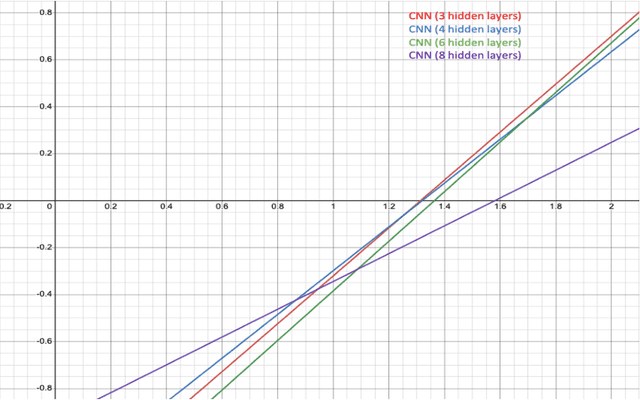Steve Mathew
A study on the deviations in performance of FNNs and CNNs in the realm of grayscale adversarial images
Sep 17, 2022



Abstract:Neural Networks are prone to having lesser accuracy in the classification of images with noise perturbation. Convolutional Neural Networks, CNNs are known for their unparalleled accuracy in the classification of benign images. But our study shows that they are extremely vulnerable to noise addition while Feed-forward Neural Networks, FNNs show very less correspondence with noise perturbation, maintaining their accuracy almost undisturbed. FNNs are observed to be better at classifying noise-intensive, single-channeled images that are just sheer noise to human vision. In our study, we have used the hand-written digits dataset, MNIST with the following architectures: FNNs with 1 and 2 hidden layers and CNNs with 3, 4, 6 and 8 convolutions and analyzed their accuracies. FNNs stand out to show that irrespective of the intensity of noise, they have a classification accuracy of more than 85%. In our analysis of CNNs with this data, the deceleration of classification accuracy of CNN with 8 convolutions was half of that of the rest of the CNNs. Correlation analysis and mathematical modelling of the accuracy trends act as roadmaps to these conclusions.
Tonal Frequencies, Consonance, Dissonance: A Math-Bio Intersection
Jun 10, 2021

Abstract:To date, calculating the frequencies of musical notes requires one to know the frequency of some reference note. In this study, first-order ordinary differential equations are used to arrive at a mathematical model to determine tonal frequencies using their respective note indices. In the next part of the study, an analysis that is based on the fundamental musical frequencies is conducted to theoretically and neurobiologically explain the consonance and dissonance caused by the different musical notes in the chromatic scale which is based on the fact that systematic patterns of sound invoke pleasure. The reason behind the richness of harmony and the sonic interference and degree of consonance in musical chords are discussed. Since a human mind analyses everything relatively, anything other than the most consonant notes sounds dissonant. In conclusion, the study explains clearly why musical notes and in toto, music sounds the way it does.
 Add to Chrome
Add to Chrome Add to Firefox
Add to Firefox Add to Edge
Add to Edge